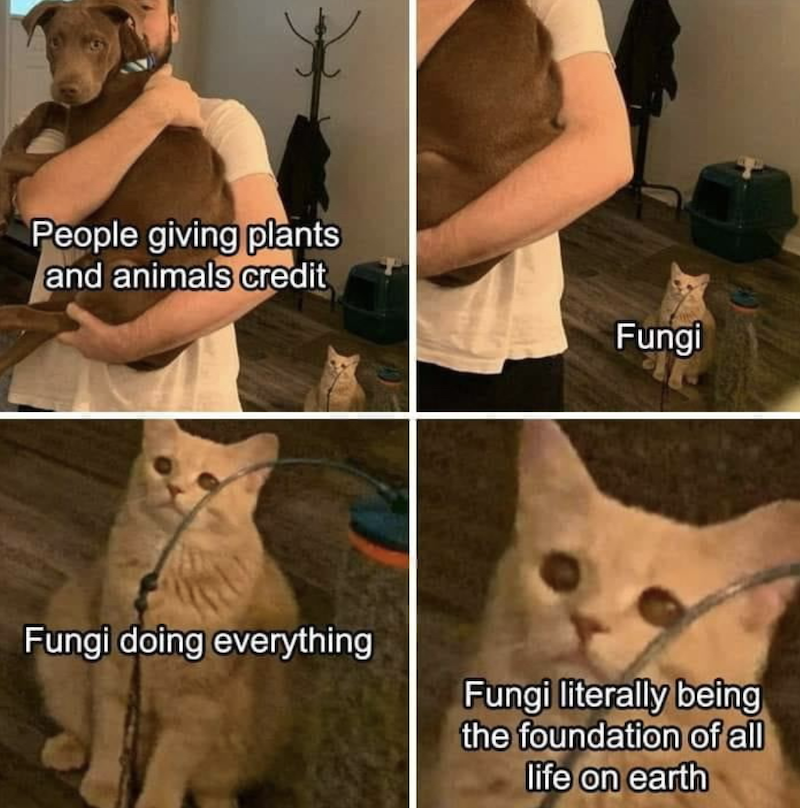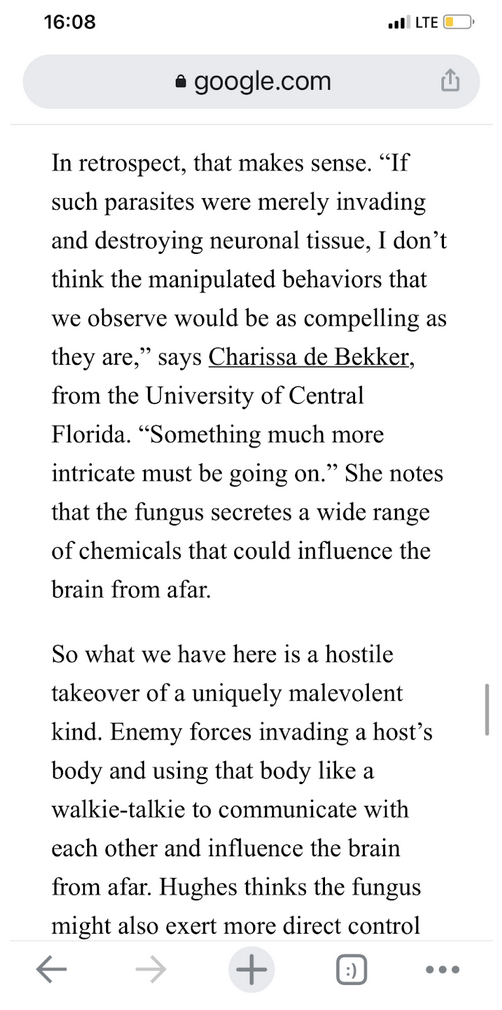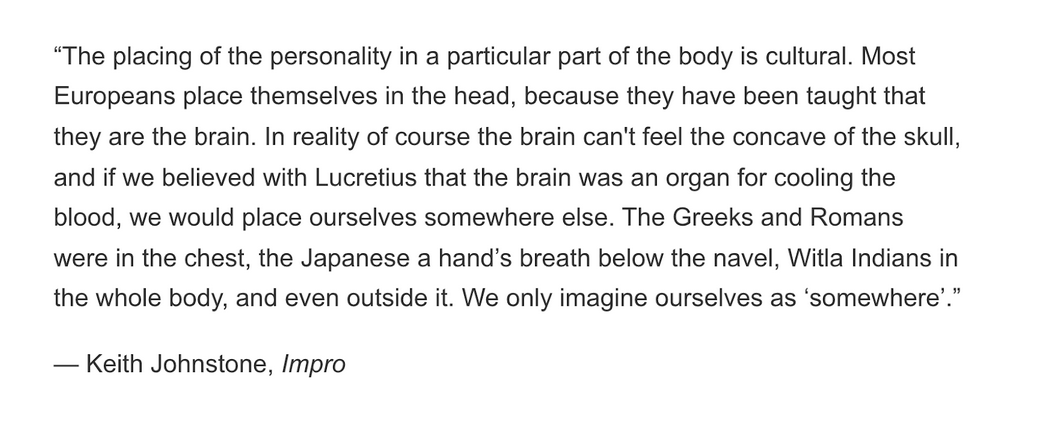Mycelial Memory and the Mycelial Internet
Neema Githere and Petja Ivanova
Carrier Bag
Intelligence
Language :
en
afrofuturism ecology carrier-bag communities future healing indigenous mycelium meme planetary visionary-fiction
Intelligence has always been used as a smoke screen to justify domination. At the dawn of Western philosophy, intelligence became identified with the European, educated, male human - paving the ways for an intellectual meritocracy - using the lack of cognition claimed in nature to justify guilt-free oppression of other species; this habitus introduced by Plato, OG-dualist Descartes and millenia of Christian theology constituted the logic of colonialism which in turn justified more oppression and equated humanity to Western concepts of intellect. As such, questioning those very concepts and definitions of intelligence is our duty as resisting cyberfeminists.

It matters what matters we use to think other matters with; it matters what stories we tell to tell other stories with and the story of intelligence needs an update, a long overdue one, a new matter to be thought through, so we propose the mycelium. The mycelium manages to entangle registers which are formally divided by dead male Western philosophers. Mycelial intelligence is that of communal support, not of domination---it is of redistribution and of community.
We have been foraging in the internet ecology, a big carrier bag with lots of ingredients for familiarizing yourself with the mycelial ways of living, communicating and organizing. Thinking in terms of re-indigenized forms of technology, the mycelial ways connect the natural, the spiritual and the techno-logical. Premised not on discreetness like in the computational technologies; it is a handling of chaos without stepping back into a proclamation of objectivity. Mycelial technology is punctuated by a foundational all-presentness. It’s not about separating entities to look at them one by one or zero by one, it’s an entanglement between all registers, may they be socio economic, scientific, spiritual, ecological; it’s a whole rewriting of our social narratives - in the mycelial lifestyle. Mycelium as metaphor but also as practical example of intelligence - their weaving, their self-organisation - it is a carrier bag of theory in itself and an example where feminist technoscience principles are expressed, such as the weaving, communal care, complex stories; and to say it in the words of Tabita Rezaire and NTU--it is a technology for epistemic liberation.
This carrier bag is a portal to speculation that expands the colonial ways of Western anthropo-centered humanist philosophy -
We sense that there is some gate to the spiritual when digging into the mycelial way of connecting and networking data and information. For instance, when speculating around mycelial consciousness - mycelium knows more than its nodes - it just feels like a fertile ground for nurturing different pathways to collectively be liberated from the framework-trance we have been lured into under this heteropatriarchal tyranny of logic. Mycelial intelligence feels inspiring and rejuvenating for a philosophy-fatigued mind; it feels like finally something new can sprout and we are freed from the dead ends of Western philosophical entrapment. We envision a future culture that places its mind in the mycelium--in the spirit--and not just in the mind. We are updating the many headed Hydra to a mycelial-mind.
Fungi are capable of everything, not only do they organize the whole resource redistribution of the forest, they can produce electricity, they can remedy the polluted environment, they can be used to build houses, make clothes and get high & healthy--what a superior intelligent species, we want nothing more than to pay reverence to them.
1. Intro Level sources to the biology and philosophy of the mycelial ways + Scientific Papers
https://www.newyorker.com/tech/annals-of-technology/the-secrets-of-the-wood-wide-web
For centuries, fungi were widely held to be harmful to plants, parasites that cause disease and dysfunction. More recently, it has become understood that certain kinds of common fungi exist in subtle symbiosis with plants, bringing about not infection but connection. These fungi send out gossamer-fine fungal tubes called hyphae, which infiltrate the soil and weave into the tips of plant roots at a cellular level. Roots and fungi combine to form what is called a mycorrhiza: itself a growing-together of the Greek words for fungus (mykós) and root (riza). In this way, individual plants are joined to one another by an underground hyphal network: a dazzlingly complex and collaborative structure that has become known as the Wood Wide Web.>>
https://e360.yale.edu/features/exploring_how_and_why_trees_talk_to_each_other
Two decades ago, while researching her doctoral thesis, ecologist Suzanne Simard discovered that trees communicate their needs and send each other nutrients via a network of latticed fungi buried in the soil - in other words, she found, they "talk" to each other. This is such a communal practice and, in our opinion, a great model to inspire social organization. We all ought to communicate our needs better and have everyone in our community support having those needs met - how advanced is the mycelial world “wood” web of needs-communication and locating the most effortless way of having those needs met.
Plants Use Underground 'Fungal Internet' to Communicate by Jeffrey P. Tomkins
The Organic Internet of a Mycelium Network: Suzanne Simard, Paul Stamets, and Terence Mackenna
This serves as an audio collage a cut up of our favorite scientific quotes hyping up mycelium, particularly gate-opening are the investigations into fungi being used to induce different states of consciousness in humans and their application in spiritual practices and rituals. Are fungi the interface to our connection to spiritual knowledges? Does the mycelium know how our brain works and how to make it work better - meaning that it is able to activate psychological healing abilities?
Plant Consciousness: The Fascinating Evidence Showing Plants Have Human Level Intelligence, Feelings, Pain and More
Plant consciousness ☝️
2. Mycelial Technology in Application
https://phys.org/news/2016-04-cook-battery-anodes-wild-mushrooms.html
Imagine a future in which the expansive intuitive intelligent organization of mycelia serves as a pathway for restoring our ecological energy imbalances - that is precisely what this paper introduces with their discovery of the efficiency of wild mushrooms to serve as battery anode material.
“Carbon fibers derived from a sustainable source, a type of wild mushroom, and modified with nanoparticles have been shown to outperform conventional graphite electrodes for lithium-ion batteries.. . ‘Current state-of-the-art lithium-ion batteries must be improved in both energy density and power output in order to meet the future energy storage demand in electric vehicles and grid energy-storage technologies,’ said Vilas Pol, an associate professor in the School of Chemical Engineering and the School of Materials Engineering. ‘So there is a dire need to develop new anode materials with superior performance.’”
https://navel.la/events/disturbed-landscape/
M Rasmussen and Laura Stinger unwind in a deeply intentional and gentle way how patriarchal cultural narratives affect our understanding of ecology and determine our behavior towards it while amplifying the remedial abilities of fungi - our ever-generative future-ancestors.
https://www.gossamerfog.com/ballad_to_detritus.html
In this video game by The Mycological Twist you can embody a node in the mycelial network, enjoy! Be the mycelium, enter its mind, think mycelial. Hopefully the first step to understanding mycelial consciousness through perspective-oriented embodiment. This game facilitates an intimate embrace of more-than-human experience.

Hyphal and mycelial consciousness: the concept of the fungal mind, Nicholas P. Money
What you could already experience in the game Ballad to Detritus by The Mycological Twist is being addressed from a scientific point of view in this paper called: Hyphal and mycelial consciousness: the concept of the fungal mind. It is fascinating to us how artists address certain phenomena from their sensing perspective so intuitively (I wonder is our intuition like a mycelium?) which science only gets to prove and affirm a little later.
The wording in this BBC clip is definitely off - it still is caught up in the old-school negative ways of labeling parasitic behavior as something inherently bad. That being said, we suggest that you watch and embrace the awe of this telepathy of how the mycelial informational technology does not need cables or even its own body--it just sends out spores taken by the air…
I’m sending my love vibrations out like spores to violently lovingly take over (comment from Petja about how the cordyceps spores are the mycelial ancestors for Neema’s theorizing of love as technology)
3. Earth Tech That Defies Explanation
I (Petja here) remember in 2015 meeting Interspecific at the Bauhaus university in Weimar and being introduced to their interfaces for making music with Physarum (slime molds), soil and plants. I already heard about Physarum and the impressive studies about them optimising their network structure, solving mazes and finding the shortest path to resources - but I didn’t know that they stretch for kilometres under the forest grounds and are responsible for the particular forest smell. Here an algorithm observed the slime molds movements to sonify them. The resulting track is transcendent in its vibrational translation of this intelligent mycelial process.

https://tabitarezaire.com/ntu.html
“NTU is a South African based family and creative agency concerned with the spiritual futures of technology. Founded in 2015 by Nolan Oswald Dennis, Tabita Rezaire and Bogosi Sekhukhuni, NTU seeks to disseminate an awareness of African sciences and technologies. Interested in technologies of epistemic liberation and cultures of scientific enquiry, the group seeks to claim agency as advanced technological beings, consciously resisting co-option. . Drawing from African spiritual philosophies, NTU’s projects embrace the interdependency of the organic, spiritual and technological realms to restore energetic imbalances.”

Water is an ancient technology with the capacity to transport. This video/link is one that must simply be experienced as the communication encrypted within it transcends explanation (at least in English). As you listen and watch along, allow yourself to surrender to this ancient and intuitive method of information transfer.